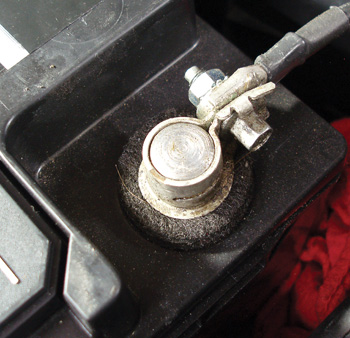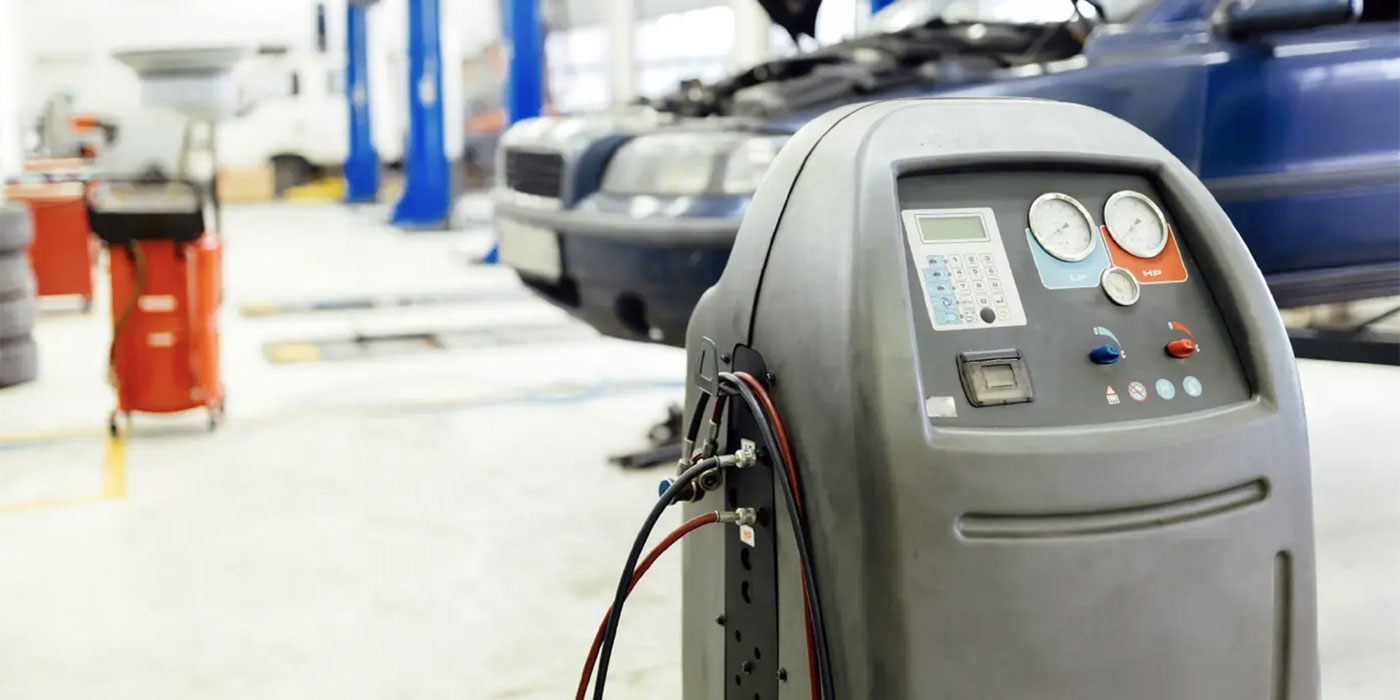The function of a vehicle’s starting battery was very different when I first began my career in automotive repair in the late 1950s. Since the engines of that day had larger cubic-inch displacements, were equipped with full-field starter motors and used high-viscosity motor oil, the starting battery had to produce at least 400 cold cranking amperes to crank the engine on cold winter mornings. 
To worsen matters, the carbureted engines of the day also required considerably longer cranking times to draw gasoline into their cylinders.
Fast-forward at least 50 years, the function of the starting battery has changed dramatically because modern engines are generally much smaller in displacement and use lower-viscosity engine oils like 5w-30 and 0w-40. Instead of dribbling gasoline into an open intake manifold to start a cold engine, modern fuel injectors spray the gasoline directly into the intake port or the cylinder itself. As the engine is cranked, the engine computer automatically adjusts fuel mixture, idle speed and ignition timing. In addition, modern permanent magnet, reduction-gear starters require only a fraction of the amperage required 30 years ago. The result of these technical improvements is an engine that starts instantly and therefore demands relatively little from a battery.
To further contrast old and new battery functions, early vehicles isolated the battery from the electrical system with the ignition off by incorporating a battery cutout or isolator relay into the charging system’s voltage regulator. In direct contrast, the battery in modern vehicles is constantly connected to the vehicle’s electrical system to power the security systems, respond to key fob commands and keep the electronic memories alive in the various computers and modules.
While modern Controller Authority Network (CAN) module communications systems allow the half-dozen or more vehicle control modules to time out or “go to sleep” so they don’t drain the battery, modern electrical systems still tend to drain the battery when the vehicle is parked. In fact, many manufacturers indicate in their owner’s manuals that the battery state-of-charge might become critically low after the vehicle has been parked for as little as three weeks.
A final and more subtle difference in modern battery function is the battery acting as a capacitor in the vehicle’s electrical system to absorb voltage spikes that are often created when an electric switch opens or closes. Because the battery tends to absorb voltage spikes, it protects on-board electronics. But, if a battery is disconnected with the engine running, transient voltage spikes and current fluctuations can easily ruin a computer or module.
Battery Types and Ratings
Automotive starting batteries are rated in cranking amperes (CA) and cold cranking amperes (CCA). Cranking amperes are the higher numerical rating and are used for comparison only in warm climates. Cold cranking amperes are, as the name implies, meant to be used in cold climates. Always use your battery cataloging to match the auto manufacturer’s recommended CCA with the application. In addition, remember that substituting a battery with less than recommended CCA will result in shortened battery life and reduced cold-weather performance.
Modern wet-cell starting batteries are generally built with thin battery plates designed to provide a very high rate of discharge during cranking. In contrast, deep-cycle batteries used in many recreational vehicle applications are generally made with thicker plates designed to supply a lower, but more constant current discharge. Deep-cycle batteries can be substituted for starting batteries, but the CCA will generally be reduced. In addition, deep cycle batteries generally require longer recharging times at lower amperage settings.
Deep-cycle batteries are rated in amp-hours, which is the discharge amperage and the hours required to reduce the battery terminal voltage to 10 volts. To illustrate, a 60 amp-hour deep cycle battery might discharge 10 amperes for six hours before terminal voltage reaches 10 volts. Or the discharge rate could be 5 amperes for 12 hours. Nevertheless, when terminal voltage is less than 10 volts, the battery is considered completely discharged.
Modern Battery Designs
Our conventional “flooded,” wet-cell, lead-acid battery has been improved during recent years to reduce corrosive gassing and increase service life. Most require no maintenance and have a service life of three to four years, depending upon climate and operating conditions. Most modern batteries are also designed to accommodate plate erosion by suspending the battery plates above the bottom of the battery case. This design reduces the likelihood that sediment build-up will short out the battery’s positive and negative plates.
Absorbed glass mat (AGM) batteries are becoming a popular choice for a premium battery because an absorbent glass mat retains the electrolyte between the battery’s positive and negative plates. Among other virtues, this manufacturing method allows the battery to be mounted in any position without leaking acid and to resist severe vibration. Many motorcycles and off-road vehicles use AGM batteries to increase reliability and service life.
Battery Failure Patterns
Obviously, the failure patterns for batteries have changed during the past 20 years. Twenty years ago, a bad battery would dramatically reduce the cranking speed of the engine and cause hard starting. Because modern engines are so easy to start, a bad battery will generally perform well until the very minute it fails. So it’s not unusual for an owner to park his vehicle only to discover an hour later that his battery is completely dead.
Deep discharging is one of the primary causes of premature battery and alternator failure. Aftermarket radios and other accessories are usually responsible for high key-off drains on the battery. Other causes include excessive key-on, engine-off accessory use or excessive cranking of hard-starting engines.
Batteries also tend to discharge from lack of use. If a vehicle is parked for long periods of time and driven only short distances, the battery plates tend to coat themselves with sulfate crystals, which reduce the plates’ ability to absorb and discharge electrical current. The symptoms of a sulfated battery are reduced CCA and an inability to accept re-charging.
Vibration caused by severe off-road driving or loose battery hold-downs accelerates normal erosion of battery plates. The sediment that builds up at the bottom of the battery case can short-circuit the positive and negative battery plates, causing a complete battery failure.
An overcharging condition in the vehicle’s charging system can also shorten battery life by boiling away the battery’s electrolyte and exposing the battery plates to atmospheric air. The symptoms of over-charging are a wet-looking battery case, excessive terminal and hold-down corrosion, and a distinct rotten-egg or sulfurous odor. Remember that high ambient temperatures accelerate all of the above battery wear factors.
The continuous or intermittent failure of individual cells also can cause many hard-to-diagnose cold-starting and driveability complaints. A 12-volt battery is comprised of six cells, with each fully-charged cell producing 2.2 volts. The total voltage of these six cells is 12.6 volts. The loss of a single cell can reduce the battery terminal voltage to 10.4 volts, which can cause hard starting and cold engine performance complaints.
Battery Testing
Modern electronic battery analyzers test a battery’s condition by passing a mild alternating current through the battery’s cells. Because electronic testers eliminate the need to recharge a badly discharged battery for testing, they essentially dominate the quick-service market.
In contrast, conventional carbon pile battery load testers require that the battery be at least 75% charged and at room temperature. The classic specific gravity testers that are used to measure the density of the electrolyte are very accurate for determining individual cell condition. But they also require recharging and are also hazardous to use because the highly corrosive battery electrolyte can spatter into the eyes. While both methods are useful in the hands of a skilled mechanic, electronic testing is the safest and generally the most accurate method of measuring battery condition.













